Guadalajara Neighbourhoods, Locations and Districts
(Guadalajara, Jalisco, Mexico)
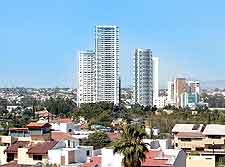
Jalisco's capital of Guadalajara is truly cosmopolitan in character and comprises a series of prominent districts and smaller neighbourhoods. The main districts within Guadalajara include the Historic Centre (Centro Histórico District), the Zona Rosa, Tlaquepaque, Tonala and Zapopan.
Many horse-drawn carriages operate all around Guadalajara's Centro Histórico and are known locally as 'Calandrias', with informal drivers pointing out places of interest along the way. Those wishing to explore this part of Guadalajara will find the Plaza de Armas a good place to start a walking tour.
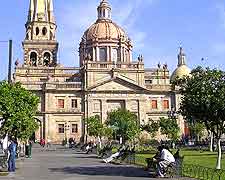
Zona Rosa District
The Zona Rosa district of Guadalajara lies directly west of the city's Metropolitan Cathedral (Catedral Metropolitana) and around the Avenida Chapultepec, a prominent local north-south thoroughfare.
This is an attractive part of Guadalajara and contains a mixture of gleaming office blocks, shopping areas and a number of quality eateries. The New Bus Terminal (Neuva Central Camionera) is located in this area and close to the Tlaquepaque suburb.
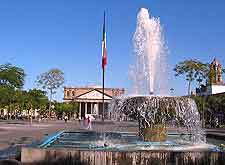
Centro Histórico District (Historic Centre)
Guadalajara's magnificent twin-towered 16th-century cathedral marks the very heart of the city and the Centro Histórico district. Situated on the eastern side of the cathedral is the Plaza de la Liberación and is edged by the Degollado Theatre. Further east, the Plaza Tapatia is a large pedestrianised precinct, edged by the historic Cabanas Cultural Institute (Instituto Cultural de Cabañas). The Centro Histórico is structured in a very organised manner, with the majority of buildings and plazas often filling entire blocks.
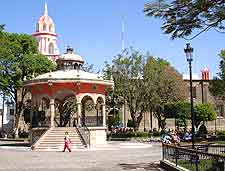
Tlaquepaque District
Anyone with even just the slightest interest in pottery and ceramics should pay a visit to Guadalajara's suburb of Tlaquepaque. Here you will encounter many arts and crafts shops specialising in pottery, selling sculptures, dishes, ornate plates and many unusual ceramics just perfect for souvenirs. Guadalajara's Tlaquepaque is a large and wealthy neighbourhood, with more than half a million residents. Full of grand residences and imposing mansions, along with a number of quality restaurants, both the Museo Pantaleón Panduro and the Museo Regional de la Cerámica exhibit an array of local pottery in the Tlaquepaque district.
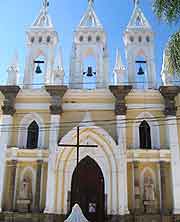
Tonala District
The Tonala district is sited some 13 km / 8 miles to the south-east of central Guadalajara, close to Tlaquepaque and is noticeably less upmarket. Although Tonala may not have fancy restaurants and pedestrianised streets, it does feature an array of local shops and factory outlets, specialising in pottery and glassworks from the neighbouring Tlaquepaque neighbourhood.
The enormous street markets are the main reason that tourists visit Tonala and take place each Thursday and Sunday. Be sure to pay a visit to the National Museum of Ceramics (Museo Nacional de la Cerámica), where you can enjoy a mixture of pots from all around Mexico. Guadalajara's Tonala district has a population of just over 350,000 people.
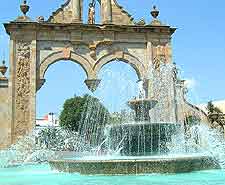
Zapopan District
Just 8 km / 5 miles north-east of downtown Guadalajara, the Zapopan district resembles a city in its own right, with around one million people living here. A number of important landmarks reside here, such as the beautiful Basilica de Zapopan, which was built in 1730 and located along the Eva Briseno. This cathedral is home to the Nuestra Senora de Zapopan statue, which is an integral part of the celebrations during the Fiestas de Octubre on the 12th October. Close to Guadalajara's Basilica de Zapopan is the Museo de Arte Huichol and the Museo de Arte de Zapopan (MAZ).
 Jalisco's capital of Guadalajara is truly cosmopolitan in character and comprises a series of prominent districts and smaller neighbourhoods. The main districts within Guadalajara include the Historic Centre (Centro Histórico District), the Zona Rosa, Tlaquepaque, Tonala and Zapopan.
Jalisco's capital of Guadalajara is truly cosmopolitan in character and comprises a series of prominent districts and smaller neighbourhoods. The main districts within Guadalajara include the Historic Centre (Centro Histórico District), the Zona Rosa, Tlaquepaque, Tonala and Zapopan.



